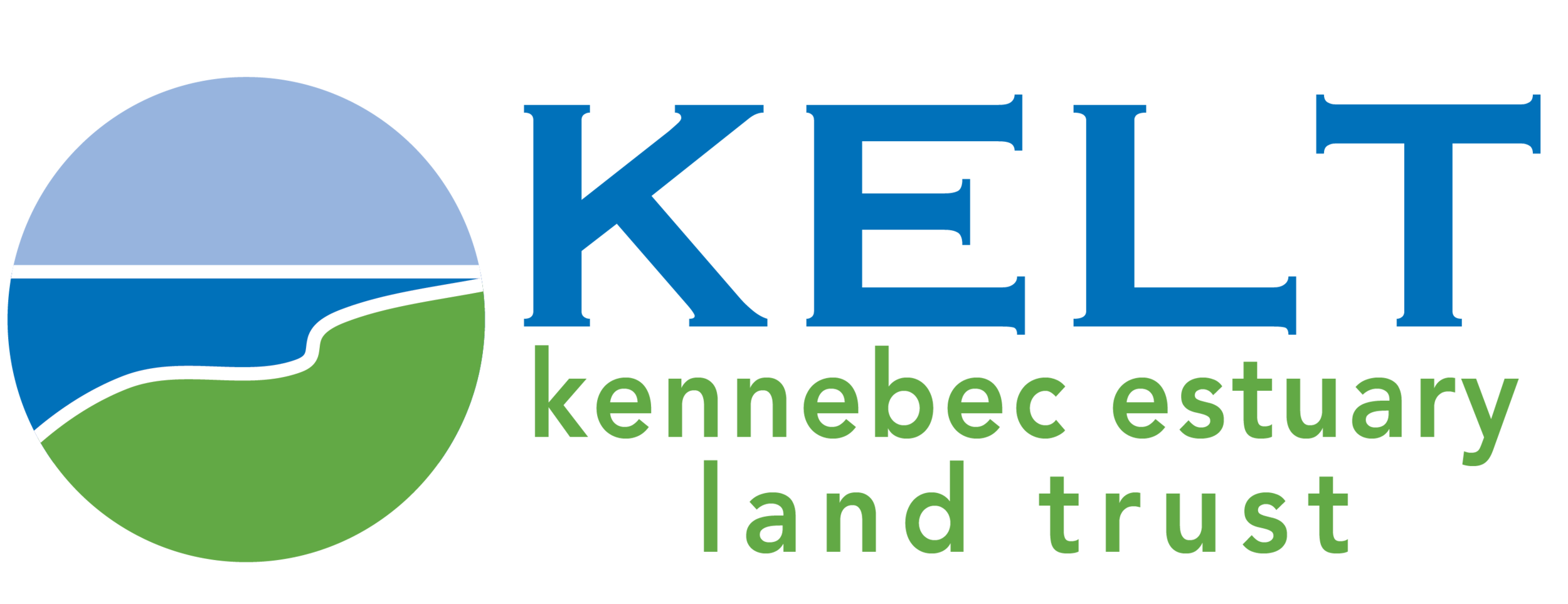Protecting Grassland Birds in an Agricultural Landscape
Author: Jane Harrison, Maine Master Naturalist Volunteer
KELT’s Red Rose Preserve serves as the summer breeding habitat for a population of Bobolinks (Dolichonyx oryzivorus), a species of migratory grassland bird. These birds are remarkable for many reasons, including their striking “backwards tuxedo” coloring, and their intricate, bubbly song. In addition to their visual and melodic appeal, these birds provide a vital service to landowners by eating vast quantities of insect pests and weed seeds.
Bobolinks are long-distance migrants, traveling nearly 6,000 miles each fall to their wintering grounds in South America. In spring they head north, often returning year after year to the same field, or those nearby, to raise their young.
Bobolinks build their nests directly on the ground hidden in the high grass. This nesting strategy protects them from their natural predators, but also makes them extremely vulnerable to destruction by mowing operations during this critical period.
Three Bobolink nestlings getting some much needed rest. Photo by Maeve McGowan, KELT.
In addition to habitat loss and intensified agriculture in their breeding grounds, Bobolinks face threats elsewhere in their wide geographic range. In South America, where they winter, they are known as “Rice Birds” because of their taste for rice and other grain. This puts them at risk of exposure to lethal pesticides used on crops as well as hunting by farmers who see them as pests. They may also be presented with a plethora of threats during migration, particularly those related to climate change including extreme weather events.
kelt and ag allies
Ag Allies is a statewide initiative that is working to protect breeding populations of grassland birds throughout Maine while providing support and guidance to farmers. KELT is proud to partner with Ag Allies and to share their mission of working to find sustainable solutions that benefit farmers and birds alike. Learn more and find out how you can support these important efforts!
Successfully raising a nest of young takes approximately 65 days in total, from the beginning of nest building to the point at which fledglings are able to fly well enough to escape farm machinery. If a field is mowed while Bobolinks are actively nesting, their nests and offspring will likely be destroyed. Unfortunately, there is an increasing overlap between the timing of peak breeding season for Bobolinks and peak harvest for hay farmers.
The Bobolink population has declined by over 2% every year between 1966 and 2015. This steep decline is consistent across most grassland birds, with the group experiencing a loss of 700 million birds globally in the past three decades. This alarming trend for Bobolinks has earned them the designation of “Species of Greatest Conservation Need” in Maine.
The most prominent threat facing Bobolinks is the loss of suitable habitat, particularly in their breeding grounds. Bobolinks originally moved into the region when there were large areas of grassland as a result of extensive land clearing in the 18th century. In the last 100 years, many of those fields have been abandoned and have returned to forest, or otherwise destroyed or fragmented by development. By managing and maintaining hayfields, dairy farmers play an instrumental role in protecting habitat for these fragile species. However, it is crucial for their practices to be sustainable and strategically timed in order for Bobolinks to survive. In collaboration with local farmers and with the help of devout volunteers from the Maine Master Naturalist Program, KELT is working to ensure the Bobolinks breeding at Red Rose Preserve have adequate time to complete a successful breeding season.
How you can help
Landowners
Determine whether or not your land is suitable habitat for grassland birds
If you think you might have Bobolinks or other grassland birds on your land, contact Ag Allies or KELT
If you have grassland birds on your land, avoid cutting fields between May 15 and August 15
Maintain their habitat by cutting and harvesting hay every year
Enlarge fields where possible and coordinate management practices with neighbors
Reduce disturbances by people, pets, and machinery throughout the breeding season (May-September)
everyone
Support your local conservation organizations that are protecting grasslands and other bird habitat
Support your local dairy farmers. Without them, these birds would have no habitat
Go birding and report sightings on eBird!
Volunteer with KELT! Adopt a preserve and monitor its bird behavior each time you visit.
Reduce stressors facing Bobolinks and other songbirds by following these seven simple steps.
For more information on how you can help Ag Allies in their efforts, contact agalliesME@gmail.com.


